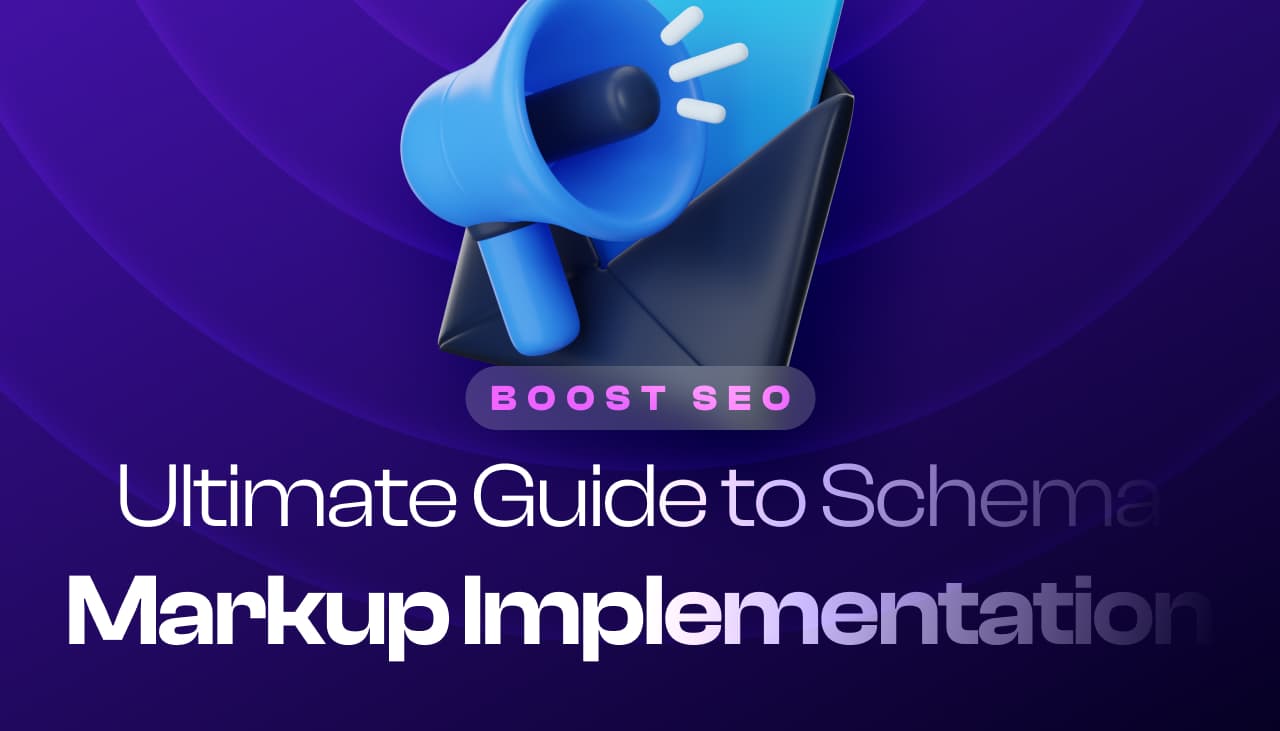In the digital marketing world, understanding keyword competition is crucial for our success. It’s the backbone of SEO strategies, guiding us in optimizing our content effectively. We’re diving deep into the art of analyzing keyword competition, a skill that can set us apart in the crowded online space. With the right tools and insights, we’ll uncover how to identify the keywords worth fighting for. By mastering keyword competition analysis, you’ll be able to create more targeted content, improve your search rankings, and drive more organic traffic to your site. Join us as we navigate through the complexities of keyword analysis, ensuring our content stands out and delivers real value to our audience.
Key Takeaways
- Analyzing keyword competition is essential for a successful SEO strategy, helping to identify the most valuable keywords that balance search volume and competitiveness, thereby optimizing resource allocation and improving campaign efficiency.
- High-competition keywords are characterized by high search volume, broad and generic terms, high CPC, dominance by big brands, low conversion rates, extensive existing content, and a dense backlink profile, guiding a more strategic approach to selection and optimization.
- Essential tools for analyzing keyword competition include Google Keyword Planner, SEMrush, Ahrefs, Moz Keyword Explorer, and KWFinder, each offering unique insights into keyword difficulty, search volume, competitor strategies, and content gaps.
- Factors critical to analyzing keyword competition encompass search volume, keyword difficulty, CPC, search intent, current rankings, content quality, and backlink profile, each impacting the strategic direction and effectiveness of SEO efforts.
- Effective strategies for analyzing keyword competition involve identifying relevant keywords, assessing keyword difficulty, understanding search intent, analyzing top-ranking content quality and backlink profiles, examining actual search results for patterns, and conducting competitor analysis to uncover strategy gaps.
Why Analyzing Keyword Competition is Important
Analyzing keyword competition is not just a task; it’s a necessity in today’s digital marketing strategy. Without it, we’re essentially flying blind in a space where visibility is key. This analysis enables us to identify not just any keywords, but the right keywords. These are the keywords that strike a balance between search volume, competitiveness, and most importantly, user intent. By understanding what users are actually looking for when they type in a specific keyword, we can create content that truly meets their needs and solves their problems. This user-centric approach not only improves our chances of ranking well but also aligns perfectly with Google’s focus on delivering high-quality, relevant content to searchers.
By understanding keyword competition, we ensure that our SEO efforts are not wasted on battles we can’t win. Instead, we’re able to focus our resources where we have the highest chance of achieving top rankings. It’s like knowing where the gold mines are in a vast field. This approach saves us time, energy, and marketing dollars, making our campaigns more efficient and cost-effective. But it’s not just about finding easy keywords to rank for – it’s about finding the right balance between competition and potential return on investment. Sometimes, a highly competitive keyword might be worth the effort if it has the potential to drive significant, high-quality traffic to your site. The key is to use competitive analysis to make informed decisions about where to invest your SEO resources for maximum impact.
Moreover, diving deep into keyword competition reveals insights into our competitors’ strategies. We learn what’s working for them and what’s not. This knowledge allows us to make informed decisions about our own strategies. We can adapt, improvise, and innovate, staying one step ahead in the SEO game. But it’s crucial to remember that while competitor analysis is valuable, it shouldn’t be the only factor guiding our strategy. We need to balance competitor insights with our own unique value proposition and audience needs. For example, if we notice a competitor ranking well for a particular keyword, we shouldn’t just try to copy their approach. Instead, we should ask ourselves: How can we create content around this keyword that provides even more value to our audience? How can we address aspects of the topic that our competitors have missed? This approach not only helps with SEO but also ensures we’re creating truly helpful, original content that stands out in the crowded digital landscape.
Additionally, a comprehensive analysis helps us to forecast trends in search behavior. It’s not just about the present but also predicting future shifts in what our audience is searching for. By staying ahead of these trends, we position ourselves at the forefront of our industry, ready to capture interest as it emerges. This forward-thinking approach involves more than just looking at keyword volumes over time. It requires a deep understanding of our industry, our audience, and broader market trends. For instance, we might notice emerging long-tail keywords that signal new user needs or interests. Or we might see shifts in language use that reflect changing attitudes or technologies in our field. By incorporating these insights into our content strategy, we can create content that not only ranks well today but continues to attract and engage users in the future. This proactive approach to content creation aligns perfectly with Google’s emphasis on expertise, authoritativeness, and trustworthiness (E-A-T) in content.
To sum it up, analyzing keyword competition is a fundamental component of a successful SEO strategy. It informs our choices, refines our tactics, and ultimately, sets us up for success in the competitive digital arena. But it’s important to remember that keyword competition analysis is just one piece of the SEO puzzle. To truly succeed, we need to combine this analysis with other crucial elements like creating high-quality, user-focused content, optimizing our website’s technical aspects, building a strong backlink profile, and ensuring a great user experience. By taking a holistic approach to SEO, where keyword competition analysis informs but doesn’t dominate our strategy, we can create a robust online presence that not only ranks well but truly serves our audience’s needs. This comprehensive approach is what sets apart the most successful websites in Google’s search results.
Characteristics of High-Competition Keywords
When we dive into the world of SEO, understanding the nature of high-competition keywords is crucial. These are the terms that every business in the niche aims to rank for, making the battle fierce and the stakes high. But it’s not just about identifying these high-competition keywords – it’s about understanding why they’re so competitive and what it takes to rank for them. High-competition keywords often represent significant commercial intent or broad informational queries that can drive substantial traffic. While they can be challenging to rank for, especially for newer or smaller websites, they can also offer significant rewards in terms of visibility and traffic if you manage to secure a top position. The key is to approach these keywords strategically, balancing them with less competitive long-tail keywords and creating exceptional content that truly deserves to rank.
High search volume is a distinctive mark of high-competition keywords. These keywords attract a large number of searches per month, indicating strong interest from users. However, it’s important to note that high search volume doesn’t always equate to high value for your business. For example, a keyword might have high search volume but low commercial intent, meaning it drives a lot of traffic but few conversions. Conversely, some lower-volume keywords might be highly valuable if they indicate a strong intent to purchase or engage with your services. When analyzing high-volume keywords, we need to consider factors like relevance to our business, the type of content users are looking for, and how well we can meet that need compared to our competitors. This nuanced approach to keyword analysis aligns with Google’s emphasis on providing the most relevant and helpful content to users.
Typically, high-competition keywords are broad and generic, like “best smartphones” or “cheap flights”. They lack specificity, casting a wide net to capture the most traffic. However, it’s crucial to understand that while these broad keywords can drive significant traffic, they often come with challenges. For one, they’re usually harder to rank for due to intense competition. Additionally, because they’re so broad, it can be difficult to match user intent effectively. Someone searching for “best smartphones” could be looking for reviews, comparisons, or simply trying to understand what makes a smartphone “the best”. This is where the concept of search intent becomes crucial. To effectively target these broad, high-competition keywords, we need to create comprehensive content that addresses multiple potential user intents. This might involve creating in-depth guides, comparison tools, or interactive content that provides value regardless of where the user is in their journey. By doing so, we not only increase our chances of ranking for these competitive terms but also provide genuinely helpful content that aligns with Google’s quality guidelines.
Another hallmark is the high cost-per-click (CPC) in paid search campaigns. This metric demonstrates the keyword’s value to businesses and the investment they’re willing to make to secure visibility. However, it’s important to understand that a high CPC in paid search doesn’t always translate directly to organic search value. While it can indicate commercial intent and potential value, organic search success depends on many other factors like content quality, user experience, and overall site authority. That said, high CPC keywords can offer valuable insights for our SEO strategy. They can help us identify topics that businesses in our industry find valuable, potentially guiding our content creation efforts. For instance, if we notice a high CPC for a particular keyword, we might consider creating a comprehensive, high-quality piece of content around that topic. This could help us capture organic traffic for a valuable keyword while potentially saving on expensive PPC campaigns. Remember, though, that our primary focus should always be on creating content that genuinely helps users, not just chasing high-value keywords.
The presence of big brands in the top search results is also telling. Their budgets and SEO strategies make it challenging for smaller players to compete directly. However, this doesn’t mean smaller businesses should avoid these keywords entirely. Instead, it calls for a more strategic approach. One effective strategy is to focus on long-tail variations of these competitive keywords. These are more specific phrases that, while they might have lower search volume, often have higher conversion rates because they target users with more specific intent. Another approach is to find content gaps – areas where even big brands might be falling short in addressing user needs. By creating more comprehensive, higher-quality content that truly answers user questions, smaller brands can sometimes outrank larger competitors. Additionally, focusing on building topical authority in specific niches can help smaller brands compete against bigger players in those areas. Remember, Google’s algorithm aims to deliver the best content to users, regardless of brand size. By consistently producing high-quality, user-focused content, even smaller brands can compete effectively in high-competition keyword spaces.
Moreover, these keywords often exhibit low conversion rates. While they draw in masses, turning those visitors into customers or leads often proves more difficult than with more specific, low-competition keywords. This is where the concept of the marketing funnel becomes crucial. High-competition keywords often target users at the top of the funnel – they’re aware of a need or interest, but not necessarily ready to make a purchase. To effectively use these keywords, we need to think beyond immediate conversions. Instead, focus on creating content that engages these top-of-funnel visitors and guides them further down the funnel. This might involve offering valuable resources, email newsletters, or other ways to stay connected. Additionally, consider how you can use retargeting strategies to re-engage these visitors later in their journey. Remember, while these keywords might not lead to immediate conversions, they play a crucial role in brand awareness and the overall customer journey. The key is to have a comprehensive content strategy that addresses user needs at all stages of the funnel, from high-level informational content to specific, product-focused pages.
We also notice a significant amount of content already exists around these terms. It means that any new content must offer unique value or perspectives to stand out. This is where the concept of 10x content comes into play. Instead of just creating another article on the same topic, aim to create content that’s ten times better than anything else out there. This could mean providing more comprehensive information, offering unique insights based on original research or experience, presenting the information in a more engaging or interactive format, or addressing aspects of the topic that others have overlooked. For example, if you’re targeting a high-competition keyword like “digital marketing strategies”, don’t just create a basic list of strategies. Instead, consider creating an in-depth guide that includes case studies, expert interviews, interactive tools, and actionable step-by-step instructions. Remember, Google’s algorithm is designed to reward content that provides the best answer to the user’s query. By focusing on creating truly exceptional content, you increase your chances of ranking well for these competitive terms while also providing real value to your audience.
Lastly, analyzing the backlink profiles of top-ranking pages can reveal the quality and quantity of links needed to compete. A high number of backlinks from reputable sites suggests a steep climb to the top rankings. However, it’s important to approach this analysis with nuance. While the number of backlinks is important, the quality and relevance of these links are often more crucial. A page with fewer, but highly authoritative and relevant backlinks, can often outrank a page with a larger number of lower-quality links. When analyzing backlink profiles, pay attention to factors like the domain authority of linking sites, the relevance of the linking page to your content, and the context in which the link appears. Also, look for patterns in the types of content that are attracting links. Are they research reports, infographics, or perhaps interactive tools? This can give you ideas for creating link-worthy content of your own. Remember, while building a strong backlink profile is important, it should be done naturally and ethically, focusing on creating valuable content that others want to link to. Google’s algorithm is sophisticated enough to recognize and penalize manipulative link-building tactics, so always prioritize quality over quantity in your link-building efforts.
Understanding these characteristics helps us tailor our strategies, ensuring we’re not blindly chasing after keywords that won’t deliver the desired ROI. Instead, we focus on a balanced approach, combining high and low-competition keywords to craft a robust SEO strategy. This balanced approach is crucial for long-term SEO success. While high-competition keywords can drive significant traffic, they often require substantial time and resources to rank for. On the other hand, low-competition keywords, especially long-tail phrases, can provide quicker wins and often have higher conversion rates due to their specificity. A well-rounded strategy might involve targeting a mix of both: using high-competition keywords to build authority and brand awareness, while also focusing on lower-competition, niche-specific keywords to drive more immediate traffic and conversions. Additionally, consider the concept of keyword clusters – groups of related keywords that allow you to create comprehensive content addressing multiple related queries. This approach not only helps you rank for a variety of terms but also signals to Google that your site has depth and authority on a particular topic. Remember, the goal isn’t just to rank for keywords, but to create a content strategy that genuinely serves your audience’s needs while aligning with your business goals.
Tools for Analyzing Keyword Competition
To navigate the competitive landscape effectively, we’ve got to have the right tools in our arsenal. These tools provide insights into keyword difficulty, search volume, and the competitive edge we need. Let’s dive into some of the top tools we rely on for analyzing keyword competition. However, before we do, it’s important to understand that while these tools are invaluable, they should be used as guides rather than gospel. The data they provide is often based on estimates and can vary between tools. Therefore, it’s crucial to use multiple tools and cross-reference their data for a more accurate picture. Additionally, always combine tool-based insights with your own industry knowledge and understanding of your audience. Remember, these tools can tell you what keywords are popular or competitive, but only you can determine which keywords are truly relevant and valuable for your specific business and audience. With that in mind, let’s explore some of the most useful keyword research tools available, understanding how each can contribute to a comprehensive keyword competition analysis.
Google Keyword Planner is a go-to tool for many of us. It’s part of Google Ads and helps us uncover keywords with high search volumes and the competition level for those keywords. Best of all, it’s free, making it a great starting point. However, it’s important to note that Google Keyword Planner has some limitations. For one, it’s primarily designed for PPC advertising, so the competition metrics are based on paid search, not organic search. Additionally, it tends to group similar keywords together, which can sometimes hide valuable long-tail opportunities. To get the most out of Google Keyword Planner, try using it in conjunction with Google Trends. This can give you insights into how search interest for particular keywords has changed over time, helping you identify rising trends or seasonal patterns. Also, don’t overlook the ‘Keyword Ideas’ tab, which can suggest related terms you might not have thought of. Remember, while Google Keyword Planner is a powerful tool, it’s just one piece of the puzzle. Use it as a starting point, but always supplement its data with insights from other tools and your own expertise.
SEMrush offers a comprehensive suite that’s invaluable for deeper keyword analysis. We get to see keyword difficulty scores, which help us identify how hard it would be to rank for a specific term. SEMrush also provides insights into the strategies of our competitors, including the keywords they are targeting. One of the most powerful features of SEMrush is its ability to show you the entire keyword profile of a competitor’s website. This can help you uncover valuable keywords you might have missed in your own research. Additionally, SEMrush’s ‘Keyword Magic Tool’ can be incredibly useful for finding long-tail keyword opportunities. It allows you to filter keywords by various metrics like search volume, keyword difficulty, and even questions, which can be great for creating FAQ-style content. Another useful feature is the ‘Keyword Gap’ tool, which allows you to compare your keyword profile with multiple competitors at once, helping you identify opportunities where your competitors are ranking but you’re not. Remember, while SEMrush provides a wealth of data, the key is in how you interpret and act on that data. Always consider the context of your business and audience when deciding which keywords to target based on SEMrush’s insights.
Ahrefs is another formidable tool that we often use. It stands out with its Keyword Difficulty score, showing us how many backlinks we’d need to rank on the first page of Google. Ahrefs also offers a peek into the search volume and the estimated clicks for keywords, guiding our content strategy with precision. One of Ahrefs’ most powerful features is its ‘Content Gap’ analysis. This tool allows you to compare your site against multiple competitors and find keywords that your competitors rank for, but you don’t. This can be incredibly useful for identifying content opportunities you might have missed. Another valuable feature is the ‘Keywords Explorer’, which provides detailed metrics for each keyword, including its ‘Parent Topic’. This can help you understand the broader context of a keyword and identify potential for topic clustering in your content strategy. Ahrefs also excels in its backlink analysis capabilities. When analyzing keyword competition, don’t forget to look at the backlink profiles of the top-ranking pages for your target keywords. This can give you insights into the type and quality of links you might need to compete. Remember, while Ahrefs provides incredibly detailed data, it’s important to use this information strategically. Don’t just chase high-volume keywords because they look attractive in the tool. Always consider the relevance to your business, the search intent behind the keyword, and your ability to create high-quality content around that topic.
Moz Keyword Explorer adds another layer to our keyword research. Beyond search volume and difficulty, it offers SERP analysis and organic CTR data. This insight helps us prioritize keywords that might not only be easier to rank for but also more likely to drive traffic. One of the standout features of Moz Keyword Explorer is its ‘Priority’ score, which combines search volume, difficulty, and organic CTR to give you a single metric for evaluating keyword opportunities. This can be particularly useful when you’re dealing with a large number of potential keywords and need to quickly identify the most promising ones. Another valuable feature is the ‘Keyword Suggestions’ tool, which can help you uncover related keywords and questions that people are asking about your topic. This can be incredibly useful for content planning, helping you create comprehensive, user-focused content that addresses all aspects of a topic. Moz also provides detailed SERP analysis, showing you exactly what types of content (videos, featured snippets, etc.) are ranking for each keyword. This can help you tailor your content strategy to match what Google is currently favoring for your target keywords. Remember, while Moz provides valuable data, it’s important to use this information in context. Always consider your specific business goals and audience needs when deciding which keywords to target.
KWFinder is great for finding long-tail keywords with lower competition. It’s perfect for those niche topics that can drive targeted traffic with less effort. The tool’s interface is user-friendly and it provides clear data on search volume, CPC, and PPC. One of KWFinder’s strengths is its ability to uncover long-tail keyword opportunities that other tools might miss. These long-tail keywords often have lower search volumes, but they can be incredibly valuable due to their high specificity and often lower competition. KWFinder’s ‘Questions’ feature is particularly useful for content creation, as it shows you the exact questions people are asking related to your topic. This can be a goldmine for creating FAQ sections or entire articles that directly address user queries. Another helpful feature is the ‘Autocomplete’ function, which can give you insights into related searches and help you expand your keyword list. KWFinder also provides a ‘Trend’ graph for each keyword, showing you how search interest has changed over time. This can help you identify seasonal trends or rising topics in your niche. While KWFinder is excellent for finding long-tail opportunities, remember to balance these with broader, higher-volume keywords in your overall strategy. A mix of both can help you build a comprehensive content strategy that captures both niche audiences and broader traffic.
By leveraging these tools, we’re better equipped to strategize and optimize our content. Each tool has its unique strengths, allowing us to paint a full picture of our keyword landscape. With this data-driven approach, we stay ahead in the ever-evolving SEO game. However, it’s crucial to remember that these tools are just that – tools. They provide data and insights, but the real value comes from how we interpret and act on this information. Always consider the context of your business, your audience, and your overall marketing goals when using these tools. For example, a keyword might look great on paper with high search volume and low competition, but if it doesn’t align with your business objectives or audience needs, it might not be worth pursuing. Additionally, don’t forget the importance of creating high-quality, user-focused content. While these tools can help you identify keyword opportunities, it’s the quality and relevance of your content that will ultimately determine your success in search rankings. Google’s algorithms are increasingly sophisticated, favoring content that provides genuine value to users over content that’s simply optimized for keywords. So, use these tools to inform your strategy, but always prioritize creating content that truly serves your audience’s needs and interests. This balanced approach – combining data-driven insights with a focus on quality and user experience – is key to long-term success in SEO.
Factors to Consider when Analyzing Keyword Competition
When diving deep into keyword competition, there are several factors we must weigh in. Each aspect provides a glimpse into the intricate web that forms the backbone of SEO strategies. It’s important to understand that keyword competition analysis is not a one-dimensional task. It requires a holistic approach that considers multiple factors and how they interact with each other. While we’ll discuss each factor individually, remember that they all work together to form a complete picture of the competitive landscape. Additionally, the importance of each factor can vary depending on your specific niche, audience, and business goals. What might be a crucial factor in one industry could be less significant in another. Therefore, it’s essential to approach this analysis with a flexible mindset, ready to adjust your strategy based on the unique characteristics of your market and audience. Let’s explore these factors in detail, keeping in mind that the goal is not just to find keywords with the best metrics, but to identify opportunities where we can provide genuine value to our audience while also achieving our SEO objectives.
Search Volume is the first factor to catch our eye. It denotes the number of searches a particular keyword receives. High search volumes indicate popular keywords but often, higher competition. However, it’s crucial to understand that search volume alone doesn’t tell the whole story. A keyword with high search volume might seem attractive, but if it’s too broad or doesn’t align with user intent, it may not drive valuable traffic to your site. Conversely, a keyword with lower search volume might be highly valuable if it’s highly relevant to your business and has strong conversion potential. When analyzing search volume, consider the following:
- Relevance to your business: Does the keyword align with your products, services, or content?
- User intent: What are users looking for when they search this term? Does your content meet that need?
- Seasonality: Does the search volume fluctuate throughout the year? This is particularly important for businesses with seasonal products or services.
- Trends: Is the search volume increasing, decreasing, or stable over time? Tools like Google Trends can provide this insight.
- Geographic variations: Search volume can vary significantly by location. Ensure you’re looking at data relevant to your target market.
Remember, a balanced keyword strategy often involves targeting a mix of high and low volume keywords. High volume keywords can drive significant traffic, while lower volume, more specific keywords often have higher conversion rates.
Keyword Difficulty is another crucial metric. This quantifies how hard it is to rank for a keyword based on the strength of the competition. Tools like SEMrush and Ahrefs give us a numerical score, simplifying our decision-making process.
We also consider the Cost Per Click (CPC), especially for paid campaigns. A high CPC suggests that the keyword is valuable, driving profitable traffic but also indicating stiff competition.
The Search Intent behind a keyword can reveal much about the user’s purpose. Whether they’re looking to buy, learn, or solve a problem guides our content strategy to perfectly match their needs.
Current Rankings tell us where our or our competitors’ content stands in the SERPs for specific keywords. Understanding who occupies the top positions helps us gauge the effort needed to dethrone them.
Content Quality among the top-ranking pages gives insight into what it takes to compete. High-quality, well-researched content sets the bar we aim to surpass with our strategies.
Lastly, the Backlink Profile of top-ranked pages cannot be ignored. A robust profile sometimes signals daunting competition, pushing us towards more strategic link-building initiatives.
In sum, these factors direct our approach to keyword competition analysis. By scrutinizing each element, we craft strategies that not only target the right keywords but also position our content optimally within the search landscape.
Strategies for Analyzing Keyword Competition
Analyzing keyword competition is essential for crafting a winning SEO strategy. It’s not just about finding the most searched terms but understanding the landscape around them.
Firstly, we begin by identifying the primary and secondary keywords relevant to our niche. Tools like Google Keyword Planner and SEMrush offer invaluable insights into search volumes and competition levels.
Secondly, assessing the keyword difficulty is critical. A lower score may indicate a better chance for us to rank higher.
We then look at the search intent behind the keywords. Are users looking to buy, learn, or find a specific website? This understanding guides our content creation process.
Analyzing the content quality of the top-ranking pages gives us clues on how to elevate ours. High-quality, engaging content tends to rank better.
Backlink profiles of these top pages are also examined. More high-quality backlinks can mean a tougher competition.
Beyond standard metrics, we explore the actual search results for patterns. Seeing how certain types of content (videos, lists, long-form articles) dominate can influence our strategy.
Finally, we leverage competitor analysis to uncover gaps in their strategies. Tools like Ahrefs help us see where competitors are focusing and where they might be missing opportunities.
Every insight gained through these strategies informs our approach, enabling us to target keywords more effectively and position our content for success.
Conclusion
We’ve navigated the terrain of keyword competition analysis, arming ourselves with strategies that not only optimize our content but also place us steps ahead in the SEO race. By identifying the right balance between search volume and competitiveness and diving deep into the nuances of our competitors’ tactics, we’ve laid down a blueprint for success. Leveraging tools like Google Keyword Planner and Ahrefs, we’re now equipped to forecast trends and adapt our strategies, ensuring our content not only reaches its target audience but resonates with them. Let’s harness these insights, refine our approach, and watch our digital marketing efforts soar to new heights.
Frequently Asked Questions
What is keyword competition in digital marketing?
Keyword competition in digital marketing refers to the level of difficulty associated with ranking for specific keywords in search engine results. It takes into account the number of websites targeting the same keywords and the strength of their SEO strategies.
Why is analyzing keyword competition important?
Analyzing keyword competition is essential for effectively optimizing content and securing top rankings in search results. It provides insights into competitors’ strategies, helps identify optimal keywords, and informs decision-making for SEO efforts to stay competitive.
How does keyword competition analysis impact SEO strategies?
Keyword competition analysis informs the selection of keywords with a balanced search volume and competitiveness. It helps in crafting content that stands a better chance against competitors, optimizing for both search engines and users, and ultimately propelling websites to higher rankings.
What are some strategies for analyzing keyword competition?
Strategies for analyzing keyword competition include identifying primary and secondary keywords, assessing keyword difficulty, understanding search intent, evaluating content quality and backlink profiles, analyzing actual search results, and leveraging competitor analysis to gain insights for better targeting keywords.
What tools are recommended for keyword competition analysis?
Recommended tools for keyword competition analysis are Google Keyword Planner, SEMrush, Ahrefs, and Moz Keyword Explorer. These tools provide comprehensive data on keyword metrics, competitor strategies, and market trends, aiding in effective SEO planning and execution.






















Responses (0 )